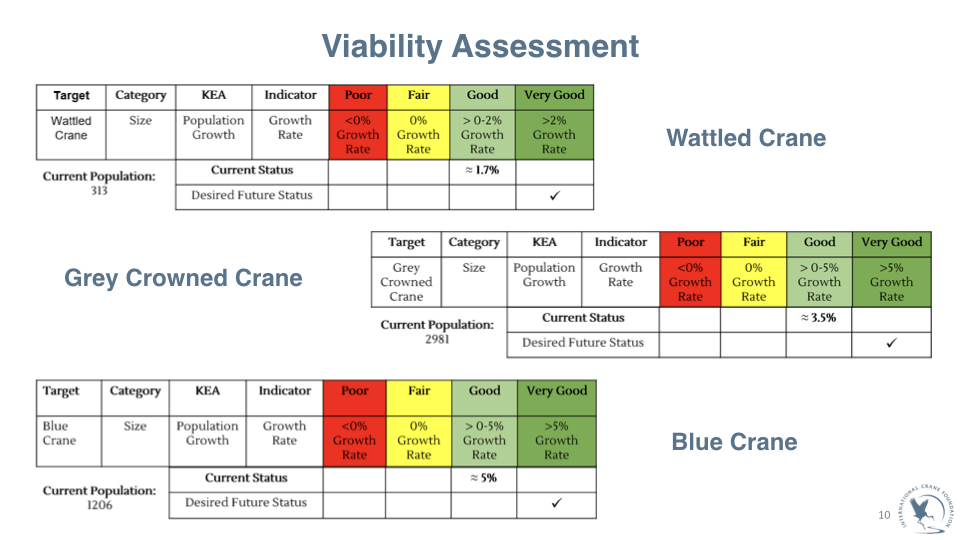African Cranes and Drakensberg Key Catchment Conservation Management Plan - Drakensberg, South Africa
The International Crane Foundation (ICF) and the Endangered Wildlife Trust (EWT) have been working in the Drakensberg area as part of the South African Crane Working Group since 2008 to promote conservation practices and secure quality habitat for the three indigenous crane species within South Africa; the Grey Crowned, Wattled, and Blue Cranes. The Drakensberg Regional Project began in 2010, and is focused on collaborating with landowners, communities, and other non-profit partners to create an environment which enables the conservation of cranes, their habitat, and adoption of better land management practices.
In 2017, ICF and EWT collaborated with University of Wisconsin-Madison’s Nelson Institute to draft a conservation management plan that brings forth new ideas, re-imagines ICF and EWT’s existing conservation plan in alignment with the Open Standards, and inputs the new plan into Miradi Conservation software to be shared widely across both organizations.
The Wattled Crane, Grey Crowned Crane, Blue Crane and Drakensberg wetlands are priority biodiversity targets. As of October 2017, Drakensberg’s wetlands rate from Poor to Very Good though the majority of wetlands evaluated are considered Good or Very Good and according to the WET-Health grading system that ICF/EWT uses. Greenhouse gas emissions, agricultural practices, accidental poisoning, pollution, powerline collisions, and human intrusion into breeding sites are the main threats facing this project’s biodiversity targets.
Our team met with the ICF/EWT staff located in the Drakensberg region of South Africa on a weekly basis to address progress, course correct, share insight, etc. The photos below are images from the final presentation my team and I presented to the ICF and EWT staff.
Full report available upon request.












































